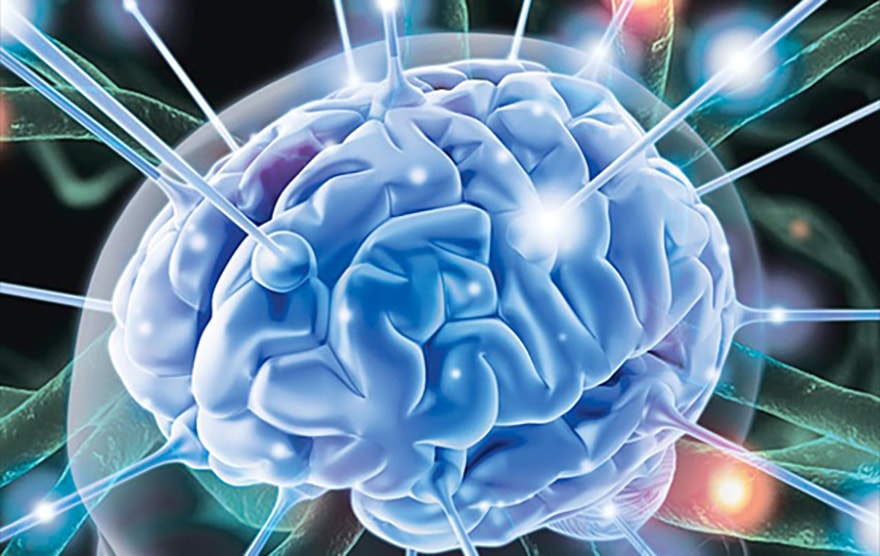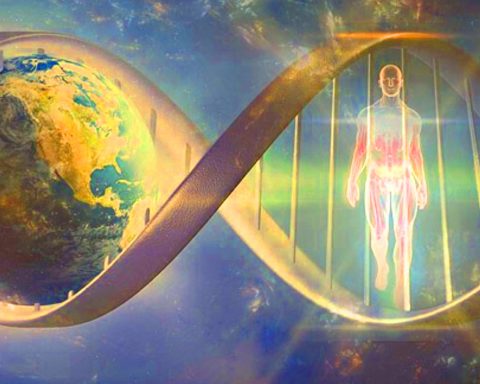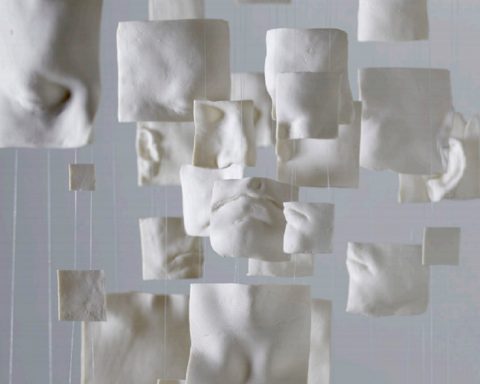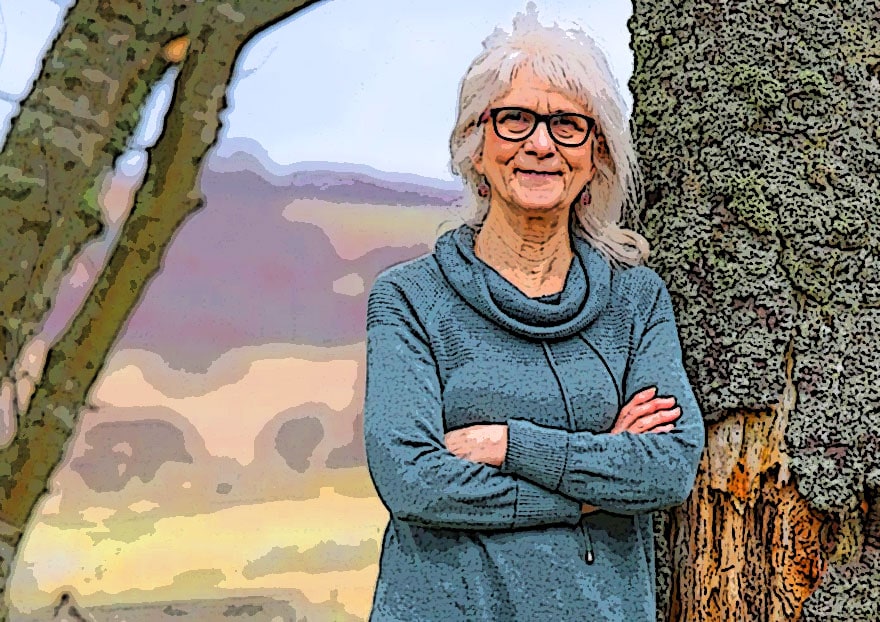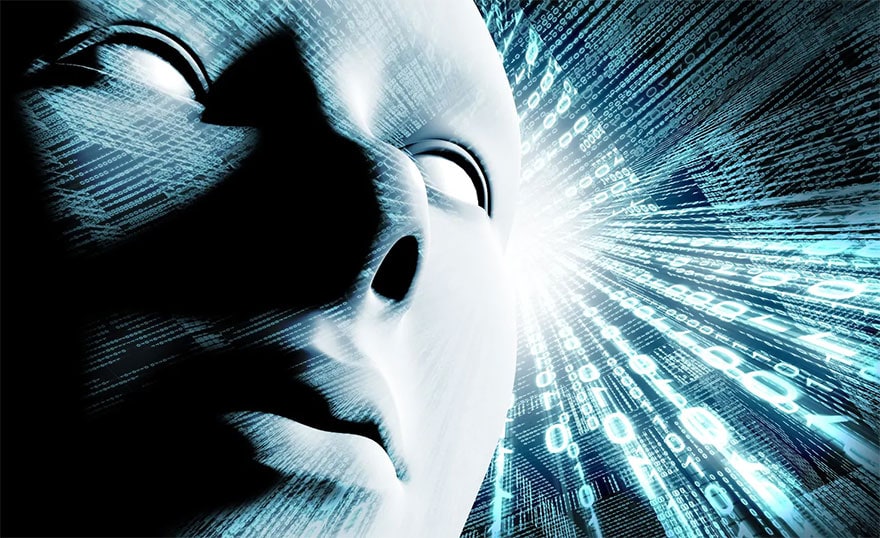La musique se vit en couleurs, cela vous semble évident. Le velours que vous caressez de la main a un goût de chocolat. Vous comptez en suivant l’arc-en-ciel que dessinent les chiffres en votre esprit, de même les lettres de l’alphabet n’ont jamais été écrites simplement en noir sur fond blanc. Vous ressentez que le monde ne se limite pas aux dimensions de votre pensée et que vous pouvez presque saisir en une seule sensation parfaite toute son immensité. Vous êtes probablement synesthète.
« Rien dans l’intelligence qui ne soit passé par nos sens. »
Aristote
La synesthésie est la capacité automatique, involontaire et permanente d’associer des sens de natures différentes. Mais elle est aussi considérée comme un trouble neurologique qui toucherait environ une personne sur 2000. Un trouble très féminin : sept synesthètes sur dix seraient du sexe féminin. Pour beaucoup, elle est comme un don : ce sont des personnes qui ont deux ou plusieurs sens liés. Par exemple, le fait de lire ce texte en noir et blanc déclenche une odeur ou des couleurs, chaque mot possèdant une couleur.
Le terme d’origine grecque « aisthesis » désigne la sensibilité, l’aptitude à avoir des sensations. La synesthésie est l’aptitude à associer spontanément et involontairement des sens de nature différente, comme par exemple de « voir la musique », de « goûter la rugositer d’une surface » ou de « voir les chiffres en couleur ».
Tous les sens peuvent potentiellement se combiner mais certaines associations sont plus fréquentes, d’autres n’ont jamais été décrites. Il est précisé sur le site Wikipedia :
– la synesthésie est involontaire et automatique
– les images synesthétiques apparaissent spatialement, ce qui signifie qu’elles ont souvent une position définie dans l’espace
– les perceptions synesthétiques sont consistantes et génériques
– la synesthésie est mémorable
– les perceptions synesthétiques ont une charge émotionnelle
– la synesthésie n’est pas linguistique, et en quelque sorte ineffable
– la synesthésie concerne des personnes ayant un cerveau ne présentant aucun signe de maladie
Le préfixe « syn », quant à lui, originaire du grec ancien, exprime l’idée d’ensemble, de réunion, comme dans les mots « synthèse », « synonyme » ou « synchronisation » par exemple. Placé devant le terme « théorie », il forme le néologisme synesthéorie, dont l’ambition est de définir un nouveau mouvement de pensée, une autre façon de comprendre le monde. En conservant deux lettres issues du mot synesthésie, il rappelle que son inspiration provient de certaines propriétés singulières des perceptions associées, qui offrent un accès privilégié et peut-être objectif au réel.
Le projet synesthéorie postule que la pensée et la conscience de soi, par nature limitées dans leurs capacités et singulières à chaque personne qui les revendique, ne permettent pas de considérer l’ensemble des informations nécessaire à une étude impartiale, objective et holistique du monde. L’hypothèse générale du projet est que l’expérience de synesthésie peut dépasser ces contraintes et être utilisée comme outil d’analyse des questionnements existentiels encore sans réponse univoque, aider à une compréhension globale, déconflictualisée et aussi simple que possible de l’ensemble des problématiques posées par l’existence.
Extrait d’une émission diffusée sur Arte et qui traite des sens. Ici, un passage très intéressant concernant le phénomène de Synesthésie, ou quand de multiples sens sont stimulés en même temps dans la perception d’un phénomène :
Modélisation
Il n’existe à ce jour aucune théorie unifiée descriptive et explicative du réel qui soit reconnue valable pour toute situation, en tout temps, en tout lieu, pour tout objet ou individu. Inspiré d’une expérience de synesthésie particulière qui s’est fait le témoin du lien matriciel de l’ensemble des objets réels interagissant avec chacun d’entre nous, le modèle synesthéorique – un « Essai sur la raison de tout » – prétend combler ce manque. Les expériences sensorielles offrant un accès privilégié au substrat universel de la connaissance et aboutissant à des productions vérifiables seront nommées heuresthésies.
Expérimentation
Le projet synesthéorie et son modèle se distinguent d’autres tentatives de compréhension du monde par la possibilité d’expérimenter, simplement mais dans la plus grande rigueur épistémologique, chacun de leurs arguments afin d’estimer de leur pertinence. La prétendue universalité de « l’Essai sur la raison de tout » devra se soumettre à l’expérience pour attester de sa validité.
Application
A partir des résultats des protocoles d’étude mis en place et dans le cadre du modèle proposé, des applications concrètes sont envisageables. Le champ des possibilités est vaste et encore peu exploité mais ces applications viseront, grâce à des dispositifs matériels et / ou logiciels, à améliorer et augmenter les capacités perceptives de l’humain dans sa relation à son environnement naturel et technologique, notamment dans le domaine du handicap.
Ces applications potentielles sont pour l’instant confidentielles mais leur objectif principal sera de rendre accessible à tout un chacun les avantages adaptatifs et les apports émotionnels des expériences sensorielles multimodales.
Par la théorie, l’expérimentation et la mise en application, le projet synesthéorie espère atteindre à la réconciliation de l’humanité avec elle-même et son environnement, tentant de retrouver, dans les processus élémentaires de perception et de cognition, le lien intime de chacun d’entre nous avec la matrice unique de l’univers physique et métaphysique. (Source : Vincent Mignerot)
« On dit que chacun connait un moment parfait, de temps en temps, une expérience de paix complète et de lien avec le monde, (…) Soudain je fis l’expérience de m’oublier moi-même et, pendant un moment bref et brillant, j’eus l’impression que toute mon anxiété et mon mal-être disparaissaient. (…) J’imagine ces moments comme des fragments ou des éclats éparpillés sur une vie entière. Si quelqu’un pouvait les coller bout à bout, il obtiendrait une heure parfaite, voire une journée parfaite. Et je pense que cette heure ou cette journée le rapprocherait de ce qui fait le mystère d’être un humain. Ce serait comme un aperçu du paradis. Daniel Tammet, Je suis né un jour bleu /Conclusion du livre. Edition les Arènes 2007) ».(nterview de Daniel Tammet dans l’émission « Salut les terriens » du 7 mars 2009)
Le trouble de la synesthésie : histoire
Le trouble de la synesthésie est apparemment connu depuis assez longtemps. Il a été « redécouvert » en 1976 par Richard CYTOWIC. Mais citons quelques auteurs qui l’ont mentionné : le premier est l’ophtalmologiste Thomas WOOLHOUSE, en 1710, qui décrit le cas d’un homme aveugle qui perçoit des sons qui induisent des visions colorées.
Sir Francis GALTON a mentionné aussi en 1907, dans son ouvrage « Inquiry into Human Faculty an dits development » l’existence de tels phénomènes chez quelques personnes. Il indique l’hérédité de cette tendance. Alexandre LURIA, le grand neurologue russe, a étudié un cas (« Une prodigieuse mémoire »). Il existe peu de chercheurs dans le monde. Une difficulté de trouver des personnes à tester ? Ou tout autre chose ?
 Une remarque de Richard CYTOWIC ; c’était en 1979. Il avait rencontré son premier synesthète. Personne n’était intéressé par son cas. Un collègue lui a même dit « Reste en dehors de ceci. Ca fait trop « new age ». Celui-ci a persisté, et s’est spécialisé dans le phénomène. D’autres chercheurs, tels que Simon BARON-COHEN de l’Université de Cambridge, s’y intéressent et la communauté s’agrandit. Il existe juste environ une trentaine de chercheurs scientifiques sur le sujet. (Source : Francejeunes.net)
Une remarque de Richard CYTOWIC ; c’était en 1979. Il avait rencontré son premier synesthète. Personne n’était intéressé par son cas. Un collègue lui a même dit « Reste en dehors de ceci. Ca fait trop « new age ». Celui-ci a persisté, et s’est spécialisé dans le phénomène. D’autres chercheurs, tels que Simon BARON-COHEN de l’Université de Cambridge, s’y intéressent et la communauté s’agrandit. Il existe juste environ une trentaine de chercheurs scientifiques sur le sujet. (Source : Francejeunes.net)
Les différentes formes de synesthésie
La synesthésie associe les sens et/ou les concepts aux sensations, de manière irrépressible, et flagrante, à la différence des non-synesthètes qui peuvent en avoir une expérience, mais très diminuée. Bien que toutes les associations de sens possibles n’ont pu être décrites, il est probable que toutes existent.
Pour la plupart d’entre nous, nous possédons les cinq sens que tout le monde connait : vue, odorat, toucher, ouïe et goût. La communauté scientifique retient un autre sens qu’est la proprioception. Cette dernière concerne les mécanismes de perception de l’environnement comme l’équilibre ou les sensations de mouvement, mais également la pression ou la température.
Selon les associations observées, plusieurs types de synesthésie ont pu être décrits, regroupés sous trois grandes catégories :
– Synesthésie bimodale
Comme son nom l’indique, il s’agit d’un croisement de deux sens, comme le goût et le toucher : caresser l’écorce d’un arbre provoque par exemple la sensation d’un goût salé dans la bouche.
Les synesthésies unidirectionnelles sont les plus courantes : un stimulus touchant une modalité sensorielle provoque l’apparition de perceptions synesthésiques dans une autre modalité, sans que l’inverse ne se produise. Par exemple, un son va produire une sensation odorante, sans pour autant que, chez la même personne, une odeur ne provoque une sensation sonore.
Dans le cas ou les sens sont doublement associés,, ce qui est relativement rare, on parle de synesthésie bidirectionnelle.
– Synesthésie Multimodale
Lorsque trois ou plusieurs sens s’associent, on parle de synesthésie multimodale : un son par exemple, provoque à la fois une sensation de goût et de lumière, comme c’est le cas d’un synesthète qui ressentait un goût acide et un flash lumineux devant les yeux, lorsqu’il entendait un son brusque et intense. Les synesthésies multimodales sont rares, à moins d’être des synesthésies catégorielles.
– Synesthésies catégorielles, ou cognitives, ou conceptuelles
On désigne par ces termes, les associations plus subtiles de sensations secondaires, plus élaborées d’un point de vue cognitif (formes, couleurs, positions dans un espace « virtuel »…), à des catégories culturelles (nombre, lettres, symboles, mots, heure, mois ou dates, quantité…). Les exemple les plus connus sont ceux de la synesthésie graphème-couleur (aussi appelée alphabet coloré) et de la synesthésie numérique, ainsi que plusieurs formes de synesthésie cognitive mettant en jeu les sons ou la musique.
 Ces synesthésies sont très particulières et leurs manifestations peuvent revêtir de nombreuses formes, que l’on regroupe généralement sous un seul nom, en fonction du sens associé et non des catégories. L’audition colorée en est un exemple : chez certains synesthètes comme Olivier Messiaen, compositeur, les accords donnaient une sensation de couleur. Les synesthètes musique → couleurs perçoivent des couleurs en réponse à des sons. Comme les synesthètes graphème → couleurs, les synesthètes rapportent rarement les mêmes couleurs pour des tons donnés (pour un synesthète, un la dièse peut être rouge ; pour un autre synesthète, il sera vert).
Ces synesthésies sont très particulières et leurs manifestations peuvent revêtir de nombreuses formes, que l’on regroupe généralement sous un seul nom, en fonction du sens associé et non des catégories. L’audition colorée en est un exemple : chez certains synesthètes comme Olivier Messiaen, compositeur, les accords donnaient une sensation de couleur. Les synesthètes musique → couleurs perçoivent des couleurs en réponse à des sons. Comme les synesthètes graphème → couleurs, les synesthètes rapportent rarement les mêmes couleurs pour des tons donnés (pour un synesthète, un la dièse peut être rouge ; pour un autre synesthète, il sera vert).
Pour Amy Beach, autre compositrice et pianiste américaine, ce sont les tonalités qui font naitre les sensations colorées. Duke Ellington, quant à lui, percevait ses couleurs synesthésiques en fonction du timbre des instruments. Nous pourrions citer d’autres grands musiciens synestètes comme Hélène Grimaud, pianiste ; György Ligeti, compositeur ; Franz Liszt ; Nikolaï Rimski-Korsakov ; Jean Sibelius ; Michael Torke ; Alexandre Scriabine. Plus proche de nous, Richard Dubugnon qui confie que ses (…) « propres pièces, je dirais qu’elles sont plutôt vert, vert-jaune. C’est un tout, je ne dissocie pas les notes de l’orchestration. C’est vraiment dans les réverbérations harmoniques. »
 Des peintres, comme Kandinsky ou David Hockney. Des écrivains, comme Baudelaire : « Les parfums, les couleurs et les sons se répondent dans une ténébreuse et profonde unité » ; comme Vladimir Nabokov ou Rimbaud « qui jetait sur le papier des sonnets sur les couleurs des voyelles » (1) : « Une matinée couverte, en juillet. Un goût de cendres vole dans l’air ; — une odeur de bois suant dans l’âtre — les fleurs rouies, — le saccage des promenades, — la bruine des canaux par les champs, — pourquoi pas déjà les joujoux et l’encens ? » (Illuminations, Phrases). Pour Rimbaud, un son résonne-t-il près de lui, il renvoie en retour une couleur de même valeur sensitive (ibid.)
Des peintres, comme Kandinsky ou David Hockney. Des écrivains, comme Baudelaire : « Les parfums, les couleurs et les sons se répondent dans une ténébreuse et profonde unité » ; comme Vladimir Nabokov ou Rimbaud « qui jetait sur le papier des sonnets sur les couleurs des voyelles » (1) : « Une matinée couverte, en juillet. Un goût de cendres vole dans l’air ; — une odeur de bois suant dans l’âtre — les fleurs rouies, — le saccage des promenades, — la bruine des canaux par les champs, — pourquoi pas déjà les joujoux et l’encens ? » (Illuminations, Phrases). Pour Rimbaud, un son résonne-t-il près de lui, il renvoie en retour une couleur de même valeur sensitive (ibid.)
Cette complexité est en lien avec la multidimensionnalité des sens et stimuli eux même : un son pur comporte un timbre, une attaque, une intensité etc… et différentes régions cérébrales réagissent séparément à ces dimensions, considérées alors comme les sens « secondaires. Pour d’autres synesthètes, la mélodie, le rythme, interviennent. De la même façon, on regroupe sous le terme de synesthésie graphème-couleur, plusieurs types de synesthésie catégorielle : voir les couleurs des lettres, ou des mots. Pour certains synesthètes graphème-couleur, les dimensions comme la calligraphie ou le caractère minuscule/majuscule, n’intervient pas et ne change pas la couleur de la lettre. (Source : Carnegie / La synesthésie, c’est quoi ? http://www.synesthesie.info/?category/La-synesthesie-cest-quoi).
Autant de spécificités qui rendent très complexe la définition des synesthésies catégorielles.
Tous les êtres humains seraient synesthètes
 Au début, l’incompréhension face à la synesthésie était due en partie aux associations décrites par les synesthètes, qui étaient très précises et détaillées, ce qui a incité à l’époque certains experts à associer cet état avec des troubles mentaux comme la schizophrénie. Et même plus récemment à estimer que la synesthésie était un retour en arrière, à un état plus primitif.
Au début, l’incompréhension face à la synesthésie était due en partie aux associations décrites par les synesthètes, qui étaient très précises et détaillées, ce qui a incité à l’époque certains experts à associer cet état avec des troubles mentaux comme la schizophrénie. Et même plus récemment à estimer que la synesthésie était un retour en arrière, à un état plus primitif.
Aujourd’hui, les scientifiques disposent d’outils qui leur permettent de sonder le cerveau, ce qui était encore impossible à réaliser il y a de 200 ans ou même 10 ans. Un tel outil est un type de scanner du cerveau appelé IRM de diffusion, ou Imagerie du tenseur de diffusion, qui permet aux scientifiques de voir les connexions entre les différentes régions du cerveau. Ci-contre : une IRM de diffusion du cerveau présentant les faisceaux de fibres nerveuses.
« Nous pouvons voir qu’il y a de nombreuses connexions entre les sens associés chez les synesthètes », a déclaré le psychologue David Brang. Visualiser ces connexions entre les régions cérébrales sensorielles pourrait aider à expliquer pourquoi certaines formes de synesthésie existent et pourquoi la condition tend à être unidirectionnel ; par exemple, les nombres peuvent évoquer des couleurs, mais les couleurs n’évoquent pas généralement les nombres. Ces études pourraient aussi aider à tester une idée proposée par certains scientifiques selon laquelle : tous les êtres humains possèdent le mécanisme neuronal pour la synesthésie, mais qu’il se serait supprimé ou éteint pour une raison encore inconnue.
Un autre développement positif dans la recherche concernant la synesthésie est que les scientifiques réapprennent à écouter leurs sujets, selon les auteurs de l’étude. Ils commencent ainsi les croire. Des études indiquent que la synesthésie aujourd’hui est environ sept fois plus fréquente chez les artistes, les poètes et les romanciers que dans le reste de la population et certains scientifiques ont émis l’hypothèse que les synesthètes sont meilleurs pour relier des idées indépendantes.
« Nous avons travaillé avec une romancière qui a juré que sa synesthésie l’a aidée à trouver des métaphores », a déclaré Brang. « Elle sait de quelle couleur doit être un mot avant même qu’elle sache quel était le mot. » Quelques savants, avec la synesthésie, étaient connus pour réaliser des prouesses étonnantes de mémorisation, comme la mémorisation de la valeur de pi à 22 514 chiffres. D’autres synesthètes sont capables de faire la différence entre des couleurs très similaires ou ont un sens aigu du toucher.
Un récent article de Futura Sciences qui vient de paraître parle de la synesthésie des chimpanzés qui dévoilerait un des secrets du langage. Comme les humains, les chimpanzés associent des couleurs à certains sons. Voilà une piste pour comprendre l’origine du langage, explique le célèbre paléoanthropologue Pascal Picq.
Malgré les progrès récents, de nombreuses questions sur la synesthésie demeurent, comme celle de savoir si des animaux vivent ces mêmes expériences mentales ou comment les différents produits chimiques du cerveau affectent l’état et le rôle exact de la génétique dans la détermination des capacités cognitives et créatives du synesthète.
En outre, David Brang rajoute, « si ce trait est aussi cool et important, pourquoi ne l’avons-nous pas ou plutôt, pourquoi ne l’avons-nous plus ? ».
(Source : étude publiée sur PlosOne : Survival of the Synesthesia Gene: Why Do People Hear Colors and Taste Words?)
Actualité de la synesthésie
 – Espace Synesthésie, Paris – 15 rue Denfert-Rochereau 93200 Saint-Denis – 01 40 10 80 78 / www.synesthesie.com
– Espace Synesthésie, Paris – 15 rue Denfert-Rochereau 93200 Saint-Denis – 01 40 10 80 78 / www.synesthesie.com
– Centre d’art virtuel « Synesthésie » qui a ouvert en 1995 un espace sur le web consacré aux théories et pratiques de l’art actuel, dans le contexte des nouvelles technologies. Le Centre d’Art virtuel de Synesthésie présente des oeuvres spécialement conçues pour l’Internet.
– Nouveau jeu vidéo « Nexus » dans lequel les concepteurs du jeu veulent créer un mélange des sens et une correspondance entre les sons, les couleurs et les formes.
– Lire : Ludwig Wittgenstein et Vincent Mignerot, vers une légitimation philosophique du projet synesthéorie.
– Lire « Wednesay is in indigo blue » de R. Cytowic et D. Eagleman..(ce livre a eu le prix 2011 Montaigne Medal).
– Lire « Musicophilia, la musique, le cerveau et nous » de Dr. Oliver Sachs.
– Ecouter Jean-Claude Ameisen parler de la synesthésie sur France Inter, « Les Battements du temps », de son histoire et de son implication dans la perception de tout un chacun…
– Vidéo de présentation du projet synesthéorie, version complète (1h20)
– Courts métrages illustrant la synesthésie auditive
– Lire « Couleurs et images en midmapping«
Pour aller plus loin :
– La synesthésie avec humour | Projet Synesthéorie dans Synesthésie, science, art et littérature (revue Epistémocritique)
– La synesthésie avec humour | Projet Synesthéorie dans Caricature de la synesthésie (Synesthesia)
– Vincent Mignerot dans Admirez le chant des baleines !
– Vincent Mignerot dans Moins on entend, plus on est sensible au toucher
– Claire Petitmengin : L’expérience intuitive
– Livre de Vincent Mignerot « Essai sur la raison de tout »
– Association Plasticités, Sciences, Arts
– Newsletter Synesthésie (Art contemporain)

(1) Rimbaud, Stefan Zweig – 1ère édition en français avril 2015
Illustration : Tableau « Synchronie de Mac Donald » – Wright – 1914


